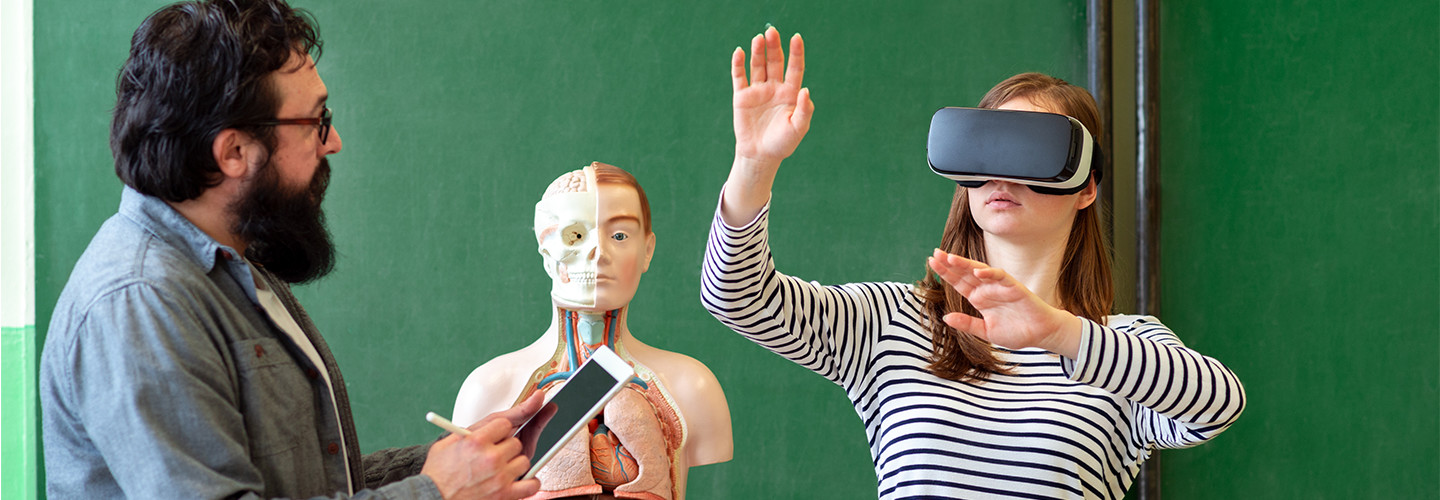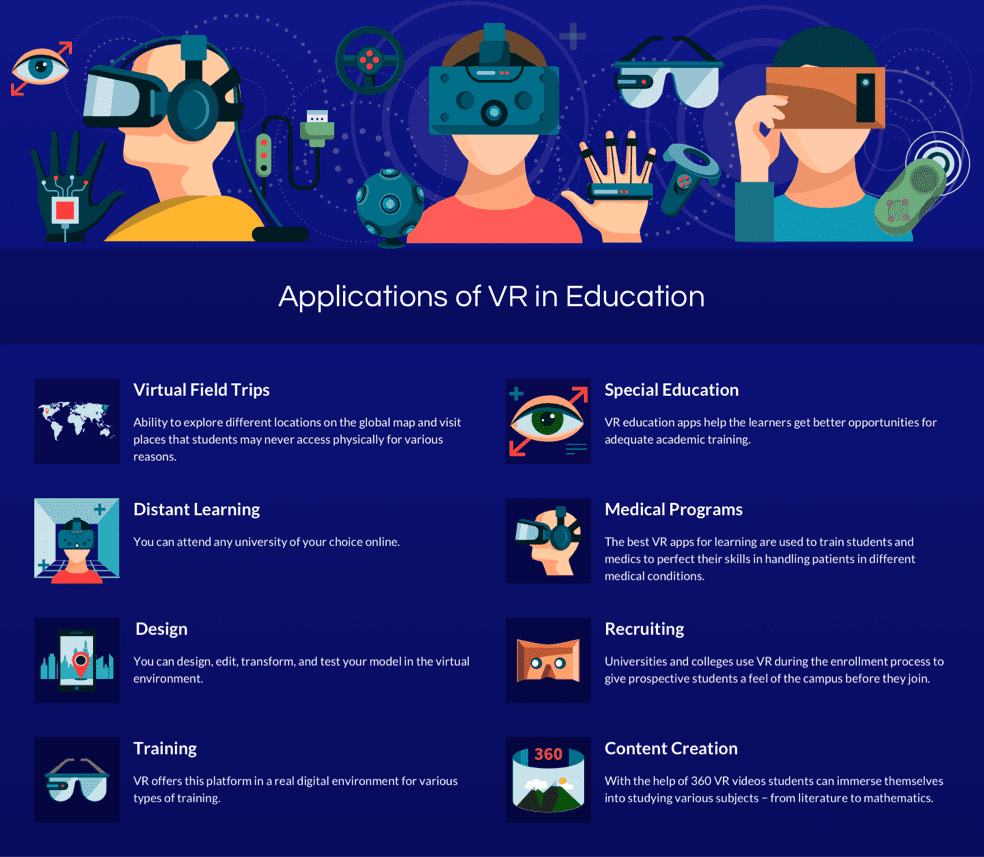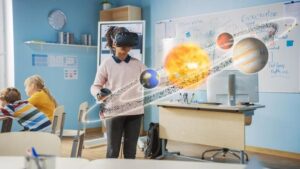It seems we can’t find what you’re looking for. Perhaps searching can help.

Virtual Reality Applications in Education: Immersive Learning
Virtual Reality (VR) is no longer a mere fantasy. It has entered classrooms around the world. This tool is changing how we learn and understand things.
Virtual reality (VR) used to be just an idea from the future, but now it’s an important part of schools all over the world. This technology is revolutionizing traditional teaching methods by providing immersive learning experiences for students. By donning VR headsets, learners can explore environments and scenarios that would otherwise be impossible in a classroom setting.
What is Virtual Reality?
First, let’s know what VR is in very short. VR is a computer-generated environment. We can interact with it using special equipment. So while using it for education, It’s like being in a video game, but for learning! Cool, right? No more boring schools, yey.
Why Use Virtual Reality in Education?
VR makes learning fun and effective. It helps students understand complex ideas. They can explore and discover things in new ways. We remember things better when we see and do them. VR allows just that.

Credit: litslink.com
Before explaining the image above, let’s know another essential thing.
How Does Virtual Reality Enhance Learning?
- It makes complex ideas simple.
- Students can visit places from the past or future.
- Science becomes more exciting with virtual labs.
- Math is straightforward when you can play with shapes.
Students can manipulate objects, conduct experiments, or even travel back in time within the virtual realm. Due to the hands-on nature of VR education, retention rates are higher than those of traditional teaching methods. Additionally, VR enables distance learning opportunities, where students can connect with experts or explore distant locations without leaving their classroom.
Are you thinking I might be telling lies? These really exist! Jump to a Practical application of virtual reality!
Applications of Virtual Reality in Education
Educators are incorporating VR into various subjects, such as history, science, and even foreign languages. VR’s interactive nature engages students and enhances their understanding of complex topics through visual and sensory stimulation. Furthermore, this tool caters to different learning styles by offering personalized learning experiences.
| Subject | Virtual Reality Use |
|---|---|
| History | Walk through ancient civilizations. |
| Science | Dive into the human body. |
| Geography | Visit different parts of the world. |
| Art | Create 3D artwork. |
| Language Arts | Experience stories in an immersive setting. |
Excited to get started right now! Let’s proceed and complete the 1st step of learning with VR.
What Do You Need to Use VR in Education?

It would help if you had some special tools:
- A VR headset to see the virtual world.
- Controllers to move and do tasks in VR.
- A computer or phone to run the VR software.
Real-life Examples of VR in Classroom
At present, VR activities are present. You can go to the National History Museum and experience VR!
- Kids meet dinosaurs at the Natural History Museum.
- Students fly through space to see the planets.
- They learn about wildlife in their natural habitats.
The Future of VR in Education
VR is growing in schools. It will become a common way to learn. Every kid might have a VR device in the classroom. Both how students learn and how professors teach will change.
Imagine a classroom where history comes alive as students are transported back in time through virtual reality. They can walk through ancient civilizations, witness historical events, and interact with figures from the past. This immersive experience engages students in a way that textbooks simply cannot.
With VR becoming more accessible and affordable, it’s likely that every student will have their own device in the near future. This shift will revolutionize traditional teaching methods, allowing teachers to design interesting, dynamic classes that accommodate different learning styles. Students will no longer be confined to desks but free to explore the wonders of science, art, and countless other subjects within the realms of VR.
Is Virtual Reality Safe for Kids?
Off to the end, the end of this article is nigh. But before going, let me talk a thing or two on the most discussed topic when it comes to learning with virtual reality ‘Is Virtual Reality Safe for Kids?’
Yes, it is safe when used the right way. It’s true that kids can be blown away with this sophisticated piece of tech and can get attached to a VR headset all the time. To prevent this, teachers should watch how long kids use VR. They make sure kids have breaks. It’s important to keep real and virtual separate.
Conclusion
Virtual Reality is an exciting tool in education. It can take learning to the next level. It helps make tough ideas more accessible to grasp. VR brings lessons to life and sparks creativity. It is a peek into the future of learning.
